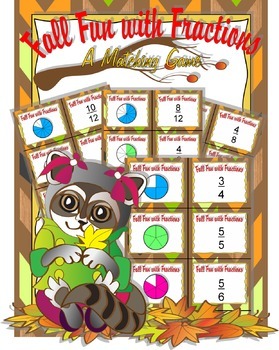Fall Fun with Fractions Matching Game
- PDF
Description
This cool math matching game makes practicing simple fractions FUN!! This board game is ideal for classroom centers, homework, home school activities or just for FUN!
#BTS2017
Contents
33 card sheets (6 cards per sheet,
66 picture cards, 66 fraction cards)
Copy onto cardstock and/or laminate the card sheets for durability. Cut/separate card sheets. Students lay the cards face down on a table, choose one card and name the fraction. Choose another card, and name its fraction. Students keep the cards that match. The player with the most matches wins!
Questions? Please contact me at ktothecore2015@gmail.com. Type “TpT?” on the subject line. Please follow my TpT store at https://www.teacherspayteachers.com/Store/K-To-The-Core
You may also like https://www.teacherspayteachers.com/Product/Fun-with-Fry-Words-Board-Game-2147594





